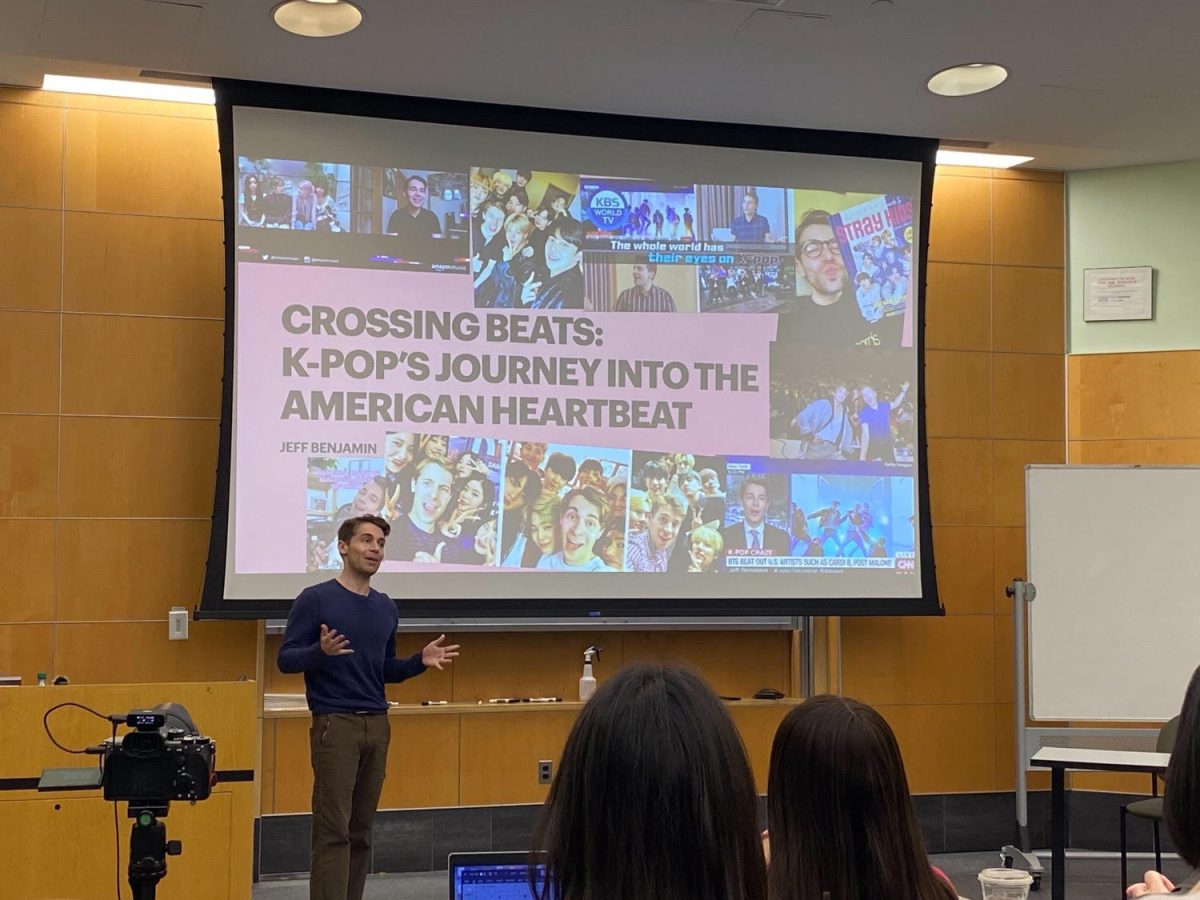
The Charles B. Wang Center’s newest exhibit, “POTASIA: Potatoism in the East,” showcases potato art. From the origins of the lowly spud to Korean Pop musicians with potatoes for heads, the celebration of the humble household staple started on March 15.
A world-class center of Asian and Asian American arts and culture, the Wang Center works to engage Stony Brook campus and the neighboring Long Island community with programs that educate and unite people of all backgrounds. Curated by the center’s Director of Cultural Programs, Jinyoung Jin, and American artist and professor of Art History at Long Island University, Jeffrey Allen Price, this exhibit and its related programs explore “Potatoism,” a term coined by Price in his 2003 writing: “The Dialectical Potato: Potato in Art, Art in Potato,” in the East.
“I call it the ‘Potato Spectrum.’ On one end is the serious fact that the potato is the most nutritious, abundant vegetable in the world,” Price said. “But on the other side of the spectrum is the hilarious side. Mr. Potato Head, couch potato, etc. I originally chose the potato because it is so approachable and easy to understand, which is not how a lot of contemporary art is perceived.”
Today, the potato diaspora is worldwide. Indigenous to the Andes Mountains in South America, this food has quickly become a staple of the international food industry. Currently, potatoes are the fourth most produced crop following corn, wheat and rice.
“From my travels alone, potatoes were always a familiar food that you knew was nutritious and delicious,” Laura Sweeney, an art contributor to this exhibit and Price’s student, said. “It reminded me of home.”
Featured in “POTASIA” are a total of 88 potato artworks by 19 artists from the United States and nine Asian countries including: China, India, Japan, North Korea, South Korea, Lebanon, Russia, Thailand and Vietnam. The “Think Potato Institute,” Mr. Price’s personal collection of almost 6,000 potato artifacts, accounts for about 100 of the artifacts that are displayed in the exhibit, even though it is counted as one artwork.
Just like Mr. Price’s “Potato Spectrum,” “POTASIA” has two main functions: to educate and to prompt reflection. While visiting this exhibit, one can learn that there are almost 4,000 different species of potatoes that range in size, color, taste and more. But if you let it, the exhibit forces one to dig deeper.
“I am interested in juxtaposing elements that do not belong together to see what happens,” Ginou Choueiri, the Lebanese artist of “Potato Portraits,” said. “It worked well when combining potatoes with human faces as their porous skin is similar to ours. It wrinkles, it comes in different shades, it even has freckles, moles and scars. And it decays.”
Exhibit contributors started experimenting with the potato to represent human life. At burial services, many people recite the words “ashes to ashes, and dust to dust.” Many artists believe that as the human ego grows, we often need reminders that we are of this world just like the foods we eat, plants we pick, waters we swim in and grounds we walk upon.
“While potatoes started as a metaphor for a life lived, I have also used them as characters that connect us with the earth,” Charles Yuen, an Asian Hawaiian artist, said.
Potatoes are used to play with the concepts of humans supporting, loving and learning from each other in artist Seongmin Ahn’s work, “Multifaceted Potatoes.” Ahn pairs the crop with gilded peonies.
“Peonies represent wealth and prosperity and paper peonies are very fragile and easily destroyed,” Ahn said. “Potatoes are a natural organic form, which grow, decay and experience an ever changing cycle. Gold represents materialism, capitalism and an unchangeable and eternal cycle. I would like to address the relationship between these elements. I want to experiment with how potatoes either survive or thrive in a given situation.”
Artists also use potatoes to remember and connect with the past. Korean artist Manhee Bak grew up on a potato farm outside of Daegu, South Korea. With his work, he used the vegetable as a vehicle for nostalgia.
“Family time,” Bak said. “We had a lot of great memories in those days playing around digging up soil to collect spuds. Now I live in New York. My father has moved into the city and we don’t spend time together as we did in those days. I miss the time. My paintings are mono printed from floor dust as collecting memories.”
In popular culture, the potato is so universal that Laura Sweeney’s contribution to the exhibit was from her personal music collection. A copy of the Japanese rock publication Potato Magazine, is also featured. Not named because of culinary content or influence, but because the magazine demonstrates that the potato is a famous face everywhere.
Curators Jin and Price hope not only to educate visitors, but to help them see potatoes in a new, symbolic light. “POTASIA” will be on display through June 15.











